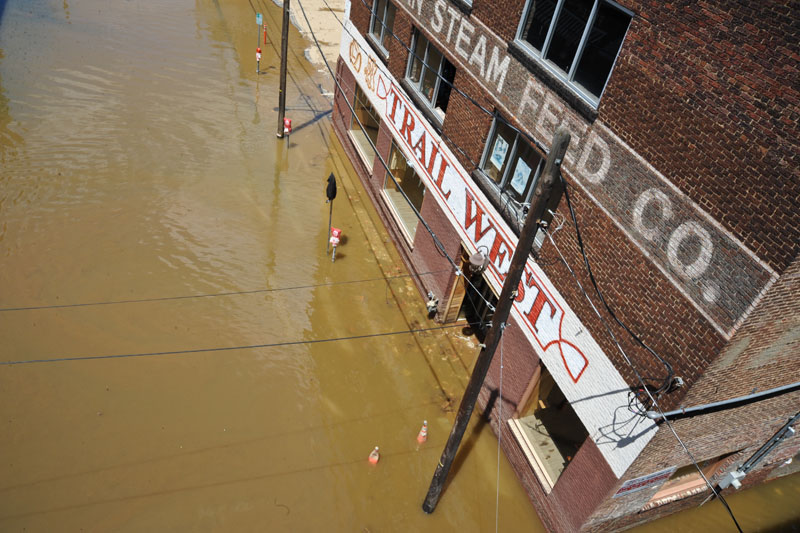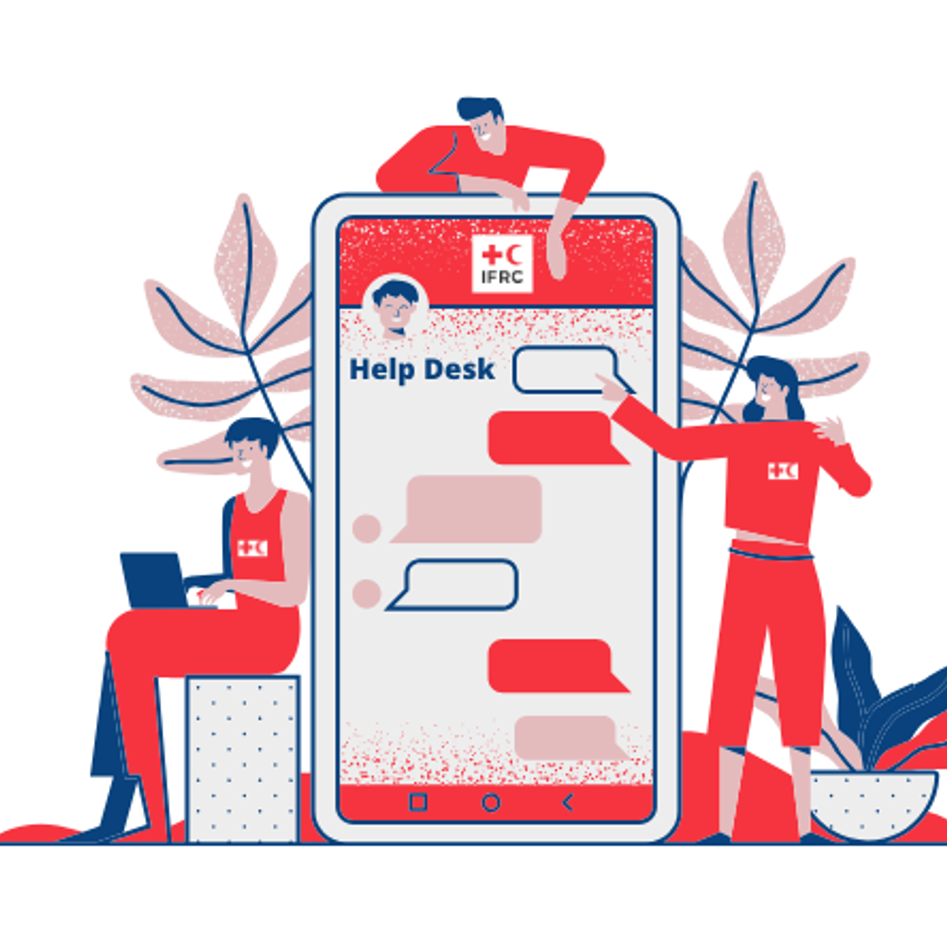Business Preparedness
While many disaster preparedness efforts are seen as individual or community-based, preparedness in the workplace, where employees spend most of their day, is important to a holistic approach to preparedness. By focusing on preparedness and business continuity planning (BCP), organizations can reduce the impact of disruptions and recover faster from disasters and emergencies. Investing in business preparedness and emergency planning saves valuable time when a disaster strikes.

Benefits of Disaster Preparedness for Businesses
Extreme events can cause direct physical impacts for businesses, as well as indirect impacts such as staffing problems, supply chain issues, and lower customer traffic due to damage to the surrounding community. These impacts can be worsened by factors such as lack of insurance, insufficient financial reserves, or prolonged business inactivity. FEMA reports that 25 percent of businesses do not reopen after a disaster. Such closures affect not only business owners but also employees and communities at large.
Comprehensive emergency planning can mitigate both direct and indirect impacts and strengthen a company’s ability to quickly recover from financial and other losses associated with a disaster. This, in turn, provides continued income and allows businesses to support and retain their employees. Employee retention helps avoid the loss of skilled and experienced staff members and eliminates the need to invest time and money in hiring new employees.
Support from their employers and continued employment also boosts the business morale of staff members, who themselves may be recovering from the disaster and are ensured that they have a financial base for dealing with disaster impacts. Thus, a good preparedness plan can enhance a company’s reputation and credibility with employees, customers, and suppliers.
Business Preparedness Initiative
Boost your business or organization's disaster resilience with GDPC's tools and resources
Preparedness Actions for Businesses
While preparedness actions vary based on the nature and size of the business, there are several steps common to all businesses that support preparation for, and reduction of, the impacts of a disaster. Many of these preparedness actions are low cost and build on existing strengths and existing business continuity plans.
Identify the different types of hazards that place your business at risk. These may include environmental hazards (e.g. floods, fires, hurricanes) and/or other risks (e.g. economic downturn, theft, power loss). For each hazard or risk, identify the associated impacts (loss of data, loss of supplies, business closure, etc.).
Starting with the potential impacts that pose the greatest risk to your business, identify measures to reduce that risk.
Consider how existing assets can be used to address risk and mitigate impacts.
Integrate preparedness into your daily operations by incorporating “disaster” days into your daily routine so that preparedness becomes business as usual.
Consider not just short-term disruption, but also the types of events that could result in long-term disruption and how the impacts of such a disruption can be mitigated.
For businesses badly impacted by hazards or risks, insurance is often critical to successful business recovery. At the very least, it speeds recovery and limits losses due to inoperability
For certain risks, such as flooding or fire, your businesses may want to go beyond planning and insurance to physically address risks.
Supporting employees to continue working through a disaster, or to return to work more quickly following a disaster, is a key part of business continuity
Have emergency plans in place, including evacuation routes, the names and contact information of all employees, designated meeting places for employees and their families, etc. This should also include protection of assets immediately before a forecasted disaster.
Business Continuity Planning (BPC)
Business continuity planning (BCP) is an organizational tool to ensure that an organization's systems can continue to function during times of crisis. BCP helps organizations to plan ahead and reduce the impact of uncertainty and risks on their operations.
Business continuity planning is an integral part of disaster preparedness efforts that helps ensure that critical business functions can continue during and after a disaster. The plan ensures that personnel and assets are protected and are able to function quickly in the event of a disaster.
BCP entails developing a comprehensive plan that covers all aspects of the business — processes, assets, workers, and more. It is not only about IT infrastructure and business systems. BCP requires defining any and all risks that can affect the company’s operations, making it an important part of the organization’s risk management strategy. Risks may include natural disasters — fire, flood, or weather-related events—and cyber-attacks. After identifying the risks, there are several steps organizations should follow to develop a solid BCP:
- Business Impact Analysis: Here, the business will identify functions and related resources that are time-sensitive.
- Recovery: In this portion, the business must identify and implement steps to recover critical business functions.
- Organization: A continuity team must be created. This team will devise a plan to manage the disruption.
- Training: The continuity team must be trained and tested. Members of the team should also complete exercises that go over the plan and strategies.

Business Continuity for Red Cross Red Crescent National Societies
Business Continuity Planning establishes the basis for the organization to continue functioning during the crises, and recover and resume business processes when programs have been disrupted unexpectedly. Because RC/RC societies play a crucial role in the overall emergency disaster response, disruptions in service should be minimized in order to maintain public trust and confidence in the RC/RC emergency response capabilities.
The organization, staff and volunteers of Red Cross and Red Crescent Societies are not immune from the threat and risks of crises and disasters. Therefore, National Societies must take planning, precautionary, mitigation and other direct measures to ensure their ability to continue executing their mission.
While a National Society may already have contingency plans in place, it is crucial for them to consider implementing continuity planning, as the two serve different purposes. Contingency plans relate to the response to a possible event, while the business continuity plans relate to sustaining programs and assets that are already operational. Business continuity planning looks at the systems of prevention and recovery to ensure the National Society continues to provide relevant country-wide services to vulnerable people during the crisis. It ensures the critical functions are in place and protected from disruption.
Business Continuity Help Desk
Looking to improve RCRC National Societies' business continuity planning? Check out IFRC Help Desk for helpful tools and resources.
Role of Businesses in Community Recovery
Businesses play a crucial role in restoring economic activity at a community level after crises and disasters. When businesses stay open or reopen quickly, they provide essential services and jobs that are vital for community resilience.
Having comprehensive disaster preparedness and business continuity plans enables businesses to respond effectively to disasters, allowing them to contribute to the community and support their employees during the recovery. This, in turn, strengths community ties and furthers people’s motivation to return to their community after a disaster.
For community-facing businesses, disaster planning should consider how community impacts and/or a loss or disruption of business will impact business success, especially when recovery can take months or years. Ideally, community support should be integrated into their disaster preparedness and continuity planning.
Prepared businesses that continue to offer services in challenging times have the opportunity to garner good publicity and boost their brand reputation. This can help them maintain or grow their customer base and cultivate customer loyalty, as they become recognized for their reliability. Additionally, their resilience bolsters the local economy as the community rebuilds, benefiting both the community and the business.


